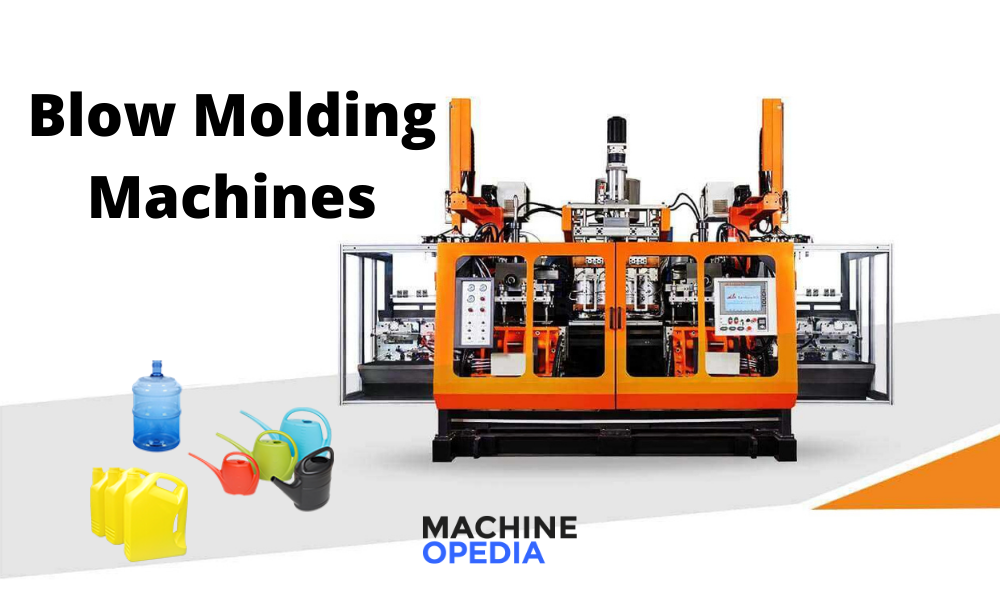
Blow Molding is a special technique used to create hollow components employing plastic materials. High-tech blow molding machines are specifically designed for large-scale industrial sectors for the execution of this process. Blow molding machines are efficient enough to fulfill all the customization requirements of various factories, such as food, medical, petroleum, pharmaceutical, etc. This revolutionary technology has brought great advancement in the world by improving productivity and manufacturing quality products. The best part is such machines can run for an indefinite amount of time. Now let's discover together some more exciting things about this innovative technology in this article.
Plastic materials that are most commonly blow-molded include Polyvinyl chloride (PVC), Polycarbonate, Nylon, HDPE (high-density polyethylene), ABS (acrylonitrile butadiene styrene), PET (polyethylene terephthalate), HWPE (high molecular weight polyethylene). Other materials include zenoi, ppo, Silicone gum rubber, etc.
Blow molding parts were always around but revolutionized more and more with time. Thousands of years back, the Egyptians used to perform blow molding of glass. Later, in the late 1880s, blow molding of plastic materials came into practice to make doll heads from cellulose. Hartford Empire Company and Plax Corporation in the 1930s and 1940s were the first firms to manufacture the blow molding parts, like the Christmas tree ornaments. All these early attempts have been revolutionized as modern blow molding equipment.
However, this high-tech system was first licensed in 1881 by corporates, Celluloid Novelty Co. and Celluloid Manufacturing Company, New York. This initial license was permitted after the dispensation work of extruded polymer into a parison of the machine.
Started with cellulose nitrate, the applications of blow molding soon expanded to cellulose acetate in the 1930s. Still, the initial stages of the blow molding procedure were least related to plastic production. In the 1940s, after the discovery of Low-Density Polyethylene (LDPE), the industry started expanding rapidly. Monsanto was the first to work on LDPE squeeze bottles via this process. This way, the glass bottles of shampoo and liquid soaps were soon replaced by plastic ones.
Subsequently, the surging popularity of plastic materials, HDPE (high-density polyethylene) and PP (polypropylene) led to a further escalation in blow molding demand. Bottles for liquid detergents, water, milk, motor oils have been manufacturing via this technique since that time. Plastic bottles and containers have become successful in replacing glass bottles and paperboards quite fast. All credits go to the versatility of the plastic material. Plastics are light in weight, portable, and most importantly, they are able to keep the freshness or quality of products maintained for a longer time. This was the reason that the dairy industry was revolutionized rapidly, as most people found it more convenient to utilize the lightweight HDPE one-gallon milk container.
Furthermore, the production of polyethylene terephthalate (PET) is directed towards the need for reheat stretch blow molding. The extraordinary properties of the PET, such as that of the biaxial orientation properties, allowed the production of bottles in mass. They were now able to resist the carbonation pressure in soft drink purposes. This is how the blow molding program became the most rampant plastic bottle manufacturing technique, main credits to the high clarity and versatility of PET stretch blow molding.
The blow molding machine made by the China bottle blow molding machine manufacturer is an efficient device that completes the entire process of blow molding in just a few steps. Starting with the temperature setting of the barrel where the specific resin has to be molded. Next, the plastic raw material is sent to the hopper and fed into the mouth of the extruder. The extruder is the major part of the system, which contains cylinders and barrels for heating the plastic.
The heating barrel in the extruder also has a screw that forces the pellets down the barrel while boiling them. The heated mass is then soaked for an hour or even many hours, depending upon the head size. Subsequently, the plastic obtains the molten form, and this melted plastic is conveyed to the mandrel of the blow molding machine. This mandrel is where the liquefied plastic attains the form of the tube and from where it is forced out the head of the plunger.
There are certain tools at the opening of the head that is programmed to form the specified wall thickness of the plastic products by increasing and decreasing the annulus. The tube of the blow molding machine, also commonly known as the Parison, later hangs on the mandrel, and the mold halves close on it. In the closing steps, an air source, with the help of a blow pin or a needle blow, blows the object into the mold cavity's figure. Lastly, the frame is re-opened, and the part is segregated from the system. Nice finishing and a secondarily trimmed is required, though after this completion of the blow molding process.
This system is most commonly used for the manufacturing of plastic bottles via the Extrusion blow molding process. As the name indicates, the extruder of the Continuous extrusion machines constantly makes the Parison (tube) out of its head. Subsequently, the mold halves then grip the Parison and then send it to a blow station. At the blow station, the air molds the components to the conformation of the mold.
These presses are used explicitly to manufacture the bigger industrial hollow parts. In these machines, the melted plastic is basically amassed in the head and then forced out from the head of the cylinders. Some of the most common products manufactured from this system include a drum, automotive panels, playground equipment, trash cans, etc. These machines are also popularly known to manufacture automotive gasoline tanks with barrier layers as they are capable of producing one to seven layers.
A semi-injection device and a semi accumulator head tool are what make this system. This machinery first thaws the plastic and then collects the shot from the anterior of the screw. Subsequently, the materials get pushed over the mandrel generating the Parison. Finally, the structure is formed in the same manner as the types above discussed.
As the name indicates, the Injection blow machines inject the material to complete its formations. They are fundamentally a hybrid between a blow molding system and an injection molding machine. Starting with the first shot of molten plastic material, the material reaches into a bolted mold (steel) and subsequently creates a pre-form. The device then unfastens its clamp and directs the pre-form on a mandrel to the blowing station. Air is applied in this blowing station which is where the plastic bottle attains its shape. After this step, the machine directs it the second time into the ejection station.
As the name suggests, this machine executes two major operations. The operation starts when the injection-molded pre-form is decrypted and sent into a serpentine belt system. Following this, the material is heated again. This reheating of the element is processed by quartz furnaces. The quartz radiators generally let the exact form more conveniently be blown when it enters the mold cavities. From the mold cavities, a rod forces the Parison. This force lengthens it, and instantaneously, blow air is supplied through the top opening of the barrel. This is how the pre-form is stretched into two directions, and that too at the same time. This technique creates bi-axially oriented items that are able to render a co2 barrier, thus forming a conventional pop bottle.
The One-step blow molding machine is often compared to the injection blow molding process. Here as well, first, the pre-form is molded. Next, the material is forced to the other stage, where it is expanded and blown simultaneously.
This revolutionized technology introduced by the bottle blow molding machine manufacturers has brought great advancements in the industrial world. Let's have a look at a few of the major advantages of the blow molding technology that proves its superiority.
